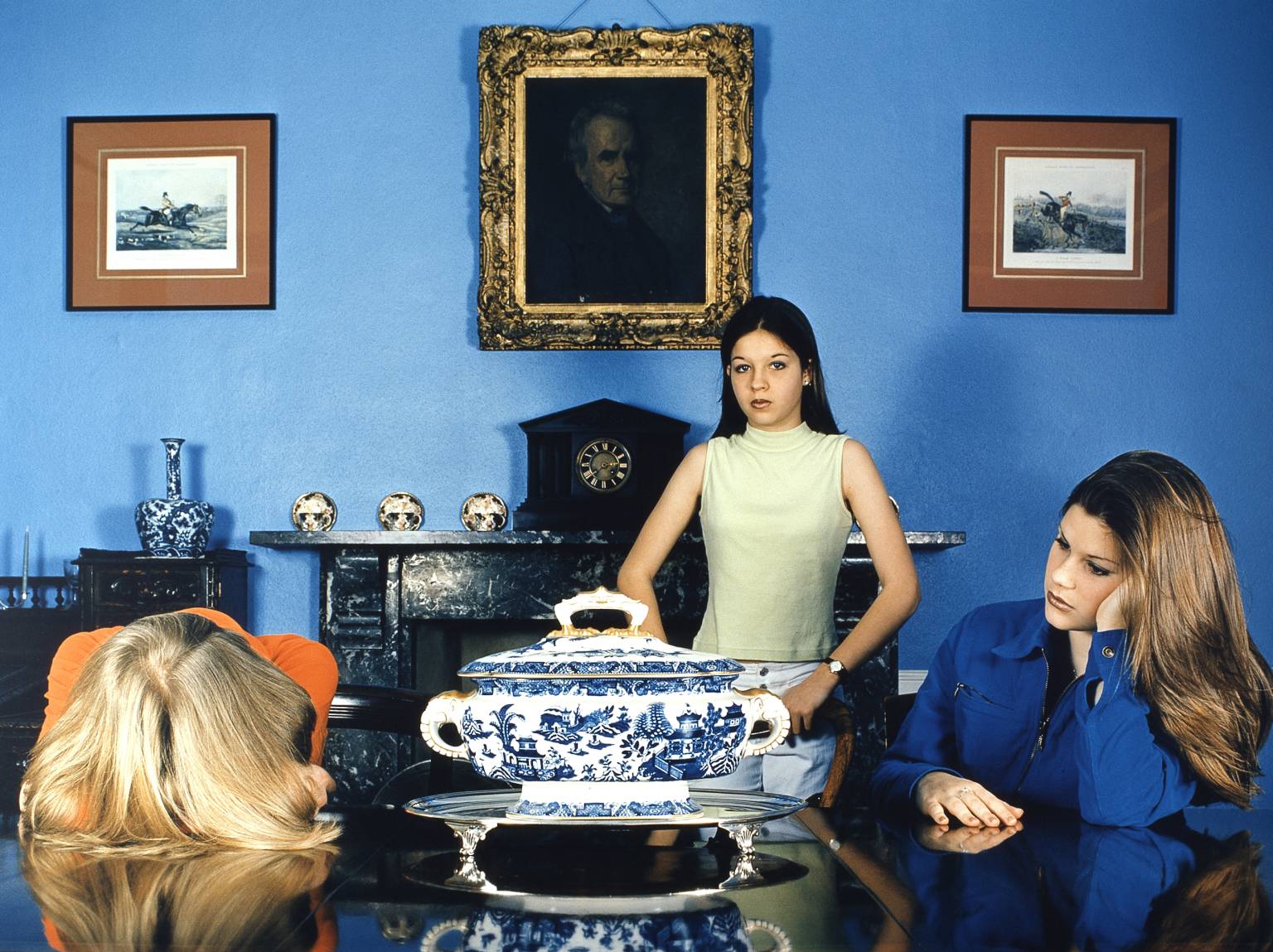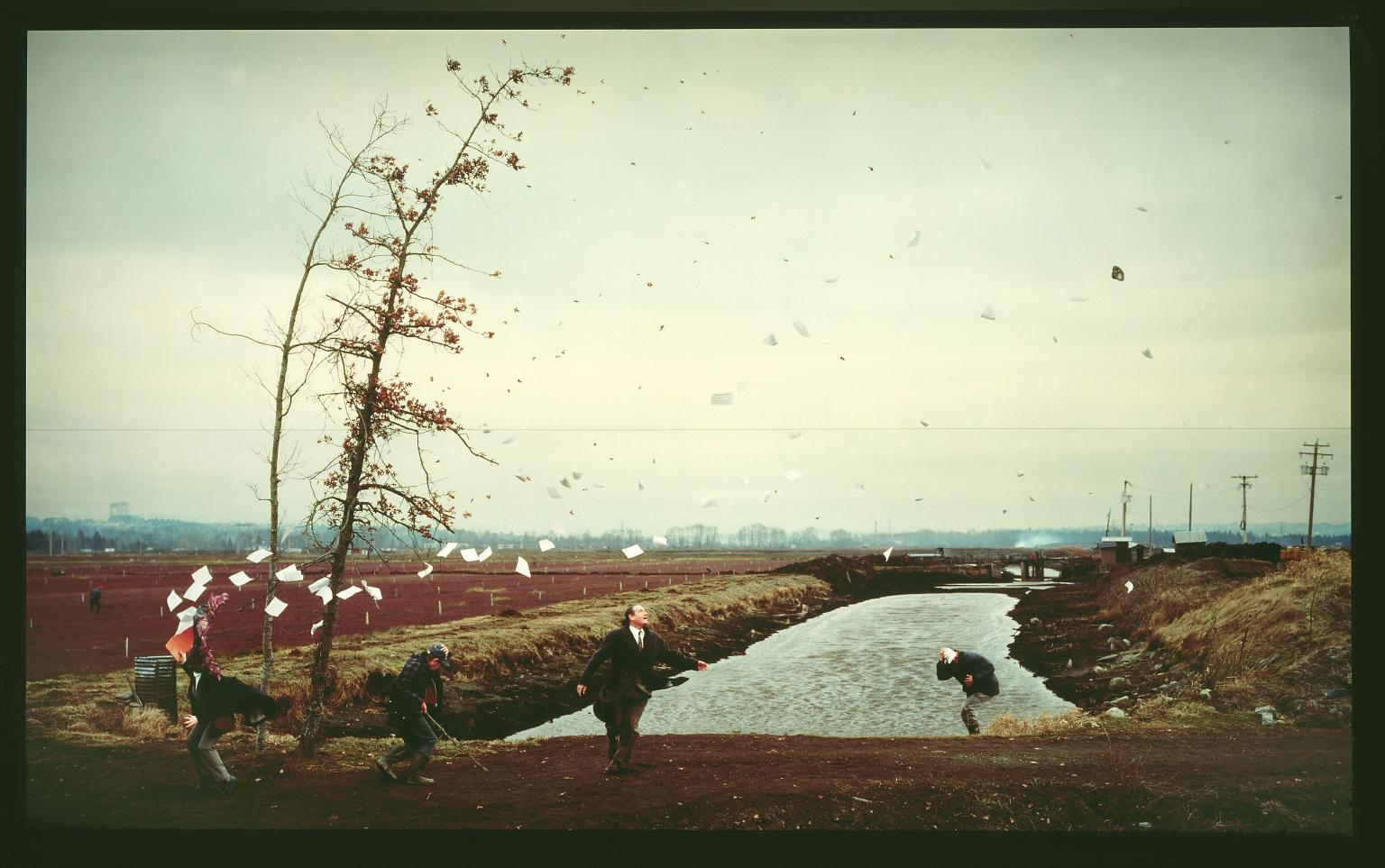Tableau Vivant, French for living picture, is used to describe a painting or photograph in which characters are arranged for picturesque or dramatic effect and appear completely unaware of the existence of the viewer. It is a static scene containing one or more actors or models. They are stationary and silent, usually in costumes, carefully posed, with props and scenery, and may be theatrically lit.
Examples Of Tableau Vivant Photographs


The sitting room and the related photograph, the dining room, are the result of a project Jones began in 1996 with three teenage girls. She has photographed them in two of their parental homes. The images are carefully set up, the furniture was often rearranged and studio lights were used to enhance the staged atmosphere. The girls belong to wealthy upper-middle class families and their homes are ornamented with symbols of wealth and status. However, in Jones photographs they appear uncomfortable and bored despite their comfortable background.


A sudden gust of wind is a large colour photograph displayed in a light box. It shows a flat landscape in which four foreground figures are frozen as they are reacting to a sudden gust of wind. It is based on a woodcut called ‘Travellers caught in a sudden breeze at Ejiri’ (1832) from a famous portfolio called ‘The thirty-six views of fuji’, by the Japanese painter and printmaker Katsushika Hokusai. The result of the photograph taken by Jeff wall is a tableau which appears staged in the manner of a classical painting.


David Lachapelle’s series of ‘Jesus is my homeboy’ is one of the most popular reinterpretations of the last supper in modern art. The image shows Jesus with 13 modern day people in a living room setting sitting around a table. the people in this photograph are not holding the same positions as the ones from the original painting but it is still obvious that this is the famous painting the last supper since they are sitting around the table reacting to Jesus.
